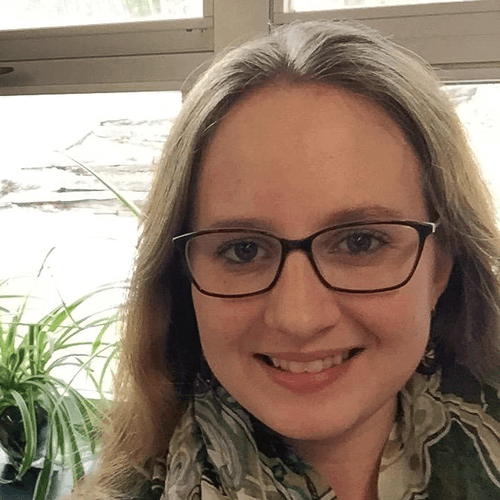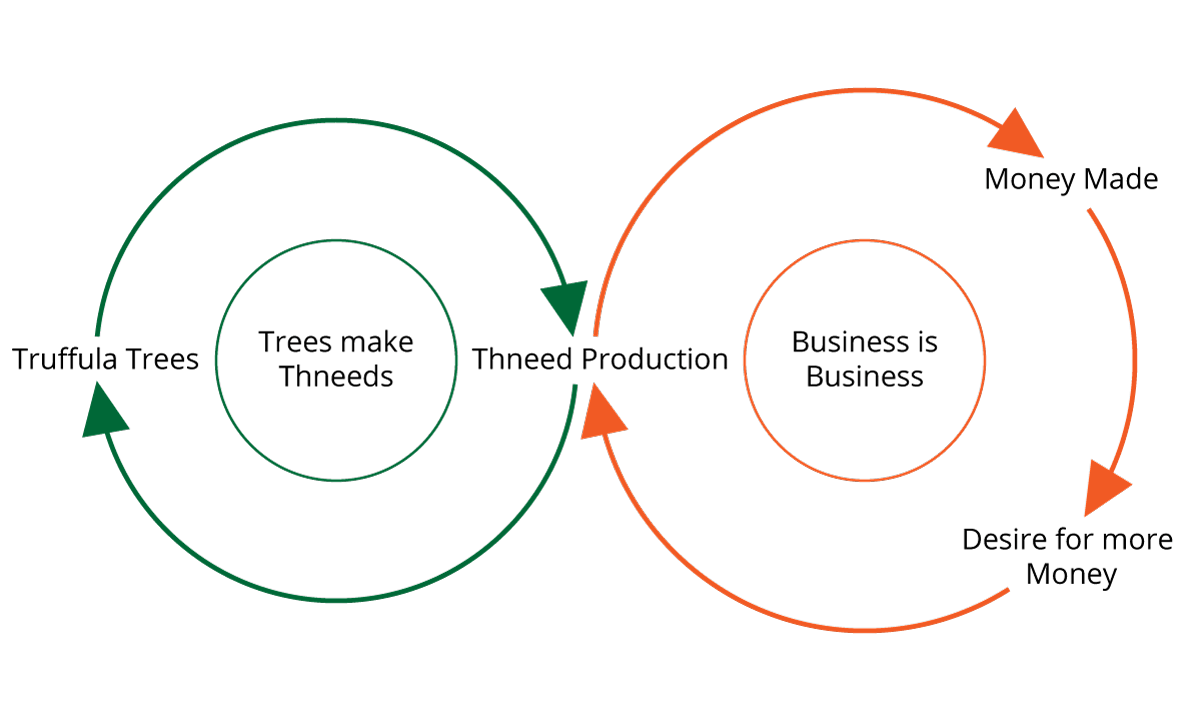The Economics and Environmental Impact of Thneed Production: Teaching Systems Thinking with The Lorax
 Sarah Marcus
Sarah Marcus
Dr. Seuss books have taught young readers many things: how to run a zoo, the fun of hopping on Pop, or what happens when you wish you had duck feet. Theodore Geisel probably never
imagined that one of his last books, The Lorax, would be used to teach high school students about Systems Thinking.
We were really impressed by the work Middle School science students were doing using Systems Thinking and Stella
Published in 2012 by The Creative Learning Exchange, a non-profit dedicated to the development of Systems Citizens in K-12 education, The Lorax lesson has become an important
part of Sarah Marcus’ high school science lesson plans. Marcus, who now teaches earth and physical science, biology, AP environmental science, anatomy and physiology, and forensic
science at Proctor Junior/Senior High School in Rutland, Vermont, discovered Systems Thinking, Stella, and The Lorax lesson when she was in graduate school at the University of Vermont.
“When I was student teaching at Montpelier High School, I visited Vermont Commons School with my mentor teachers, Sam Bromley and Katy Chabot,” says Marcus. “We were really impressed
by the work Middle School science students were doing using Systems Thinking and Stella. I decided that I wanted to use Stella during my solo teaching experience and stumbled upon
The Lorax exercise on the Creative Learning Exchange website when I was looking for ideas.”
Systems Thinking forces kids to really spend time and analyze an issue or concept... They find connections and see relationships which is an important skill for everything in their life
Marcus wasn’t just looking for something new to do. She immediately saw the important role Systems Thinking plays in education. “Systems Thinking forces kids to really spend time
and analyze an issue or concept,” she says. “They find connections and see relationships which is an important skill for everything in their life.”
She also realized that learning to think systemically and use Systems Thinking concepts and vocabulary would be a challenge to students who were used to being told information
and what to do. That’s where The Lorax exercise comes in.
Most students are familiar with The Lorax either through the book or the movie... It’s comfortable and we’re able to review something familiar and start simple
“Most students are familiar with The Lorax either through the book or the movie,” says Marcus. “They really enjoy going back to things they know from childhood. It’s comfortable and
we’re able to review something familiar and start simple.”
For those who don’t remember the story of The Lorax, it’s a simple, compelling look at the relationship between entrepreneurship (the Onceler’s invention of thneeds), natural resource
utilization (thneeds are made out of truffula trees), profitable manufacturing, greed, and environmental impact. “Students look for elements in the story that change, what causes the
change, and how those changes impact other elements,” says Marcus. For example, cutting down truffula trees enables the Onceler to make more thneeds which eventually decimates the
truffula tree and impacts the environment.
“The kids work in groups to break the entire system down into subsystems,” says Marcus. “They identify links between story elements and use those links to create feedback loops.”
Students note that some loops are reinforcing – making more thneeds increases profits – and others are balancing – cutting down more truffula trees decreases the stock of available trees.
Students look for elements in the story that change, what causes the change, and how those changes impact other elements
Marcus has tweaked the Creative Learning Exchange exercise to include Stella. She uses pre-built maps to help students understand stocks, flows, and converters. “It takes time for
students to learn how to build maps,” says Marcus. “They often struggle with naming flows and understanding the difference between stocks and converters but once they get the hang
of it, they really enjoy the exercise.”
Systems Thinking and Stella also force students out of their educational comfort zone, which inspires deeper learning. “Kids are so used to being told what to do all the time,” says Marcus.
“They’re great at following directions but that’s not the point of Systems Thinking. When they get stuck, I don’t give them an answer. I prod them with questions or give them a few hints.”
 Causal Loop Diagram of Thneed Production
Causal Loop Diagram of Thneed Production
While Marcus introduces her students to Systems Thinking and Stella with The Lorax, their modeling experience doesn’t end there. “Many students have ah-ha moments when we move on to
connect maps of the water and carbon cycle,” she says. “We look for connections and overlaps between the two and I challenge students to add human impact. They quickly realize the many,
many ways humans impact those cycles and see how related the systems are.”
Systems Thinking and Stella also tie in with the Next Generation Science Standards (NGSS) that have been developed by the National Research Council and adopted by 26 states including Vermont.
Included in NGSS Framework are scientific and engineering practices – students are required to learn how to ask questions and define problems, plan and carry out investigations, present
findings and evidence, and be able to identify causes, effects, and patterns. “Stella helps students learn and demonstrate proficiency with many parts of the framework,” says Marcus.
We look for connections and overlaps... They quickly realize the many, many ways humans impact those cycles and see how related the systems are
Working at a small school and teaching so many classes allows Marcus and her students to apply Systems Thinking to a wide range of systems and scientific concepts. “I’m looking forward
to learning more about Stella and getting my advanced students to build more complex models that include math and data,” says Marcus. “Once kids learn how to think in a systems way,
they can really take off.”
To learn more about The Lorax exercise, visit www.clexchange.org.